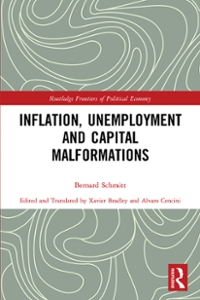Provide answers and explanations for the multiple choice questions.
1) A relative price is A) the ratio of one price to another. B) the difference between one price and another. C) the slope of the supply curve. D) the slope of the demand curve. 2) If the price of a candy bar is $1 and the price of a fast food meal is $5, A) the money price of a fast food meal is 1/5 of a candy bar. B) the money price of a candy bar is 1/5 of a fast food meal. () the relative price of a fast food meal is 5 candy bars. D) the relative price of a candy bar is 5 fast food meals. 3) If the price of a hot dog is $2 and the price of a hamburger is $4, A) the money price of a hamburger is 2 hot dogs. B) the money price of a hot dog is 2 hamburgers. C) the relative price of a hot dog is 1/2 of a hamburger. D) the relative price of a hamburger is 1/2 of a hot dog. 4) The opportunity cost of good A in terms of good B is equal to the A) ratio of the price of good B to the price of good A. B) ratio of the price of good A to the price of good B. () price of good A minus the price of good B. D) price of good B minus the price of good A. 5) The opportunity cost of a hot dog in terms of hamburgers is A) the price of a hot dog minus the price of a hamburger. B) the ratio of the slope of the supply curve for hot dogs to the slope of the supply curve for hamburgers. C) the ratio of the slope of the demand curve for hot dogs to the slope of the demand curve for hamburgers. D) the ratio of the price of a hot dog to the price of a hamburger.7) Demands differ from wants in that A) wants require a plan to acquire a good but demands require no such plan. B) demands are unlimited, whereas wants are limited by income. C) wants imply a decision about which demands to satisfy, while demands involve no specific plan to acquire the good. D) demands reflect a decision about which wants to satisfy and a plan to buy the good, while wants are unlimited and involve no specific plan to acquire the good. B) Scarcity guarantees that A) wants will exceed demands. B) demands will be equal to wants. C) demands will exceed wants. D) most demands will be satisfied. 9) The quantity demanded is A) the amount of a good that consumers plan to purchase at a particular price. B) independent of the price of the good. C) independent of consumers' buying plans. D) always equal to the equilibrium quantity. 10) The law of demand states that, other things remaining the same, the higher the price of a good, the A) smaller is the demand for the good. B) smaller is the quantity of the good demanded. () larger is the quantity of the good demanded. D) larger is the demand for the good. 11) The law of demand implies that, other things remaining the same, A) as the demand for cheeseburgers increases, the price of a cheeseburger will fall. B) as the price of a cheeseburger rises, the quantity of cheeseburgers demanded will decrease. C) as income increases, the quantity of cheeseburgers demanded will increase. D) as the price of a cheeseburger rises, the quantity of cheeseburgers demanded will increase.A survey indicated that chocolate is Americans' favorite ice cream flavor. For each of the following, indicate the possible effects on demand, supply, or both as well as equilibrium price and quantity of chocolate ice cream. a. A severe drought in the Midwest causes dairy farmers to reduce the number of milk-producing cattle in their herds by a third. These dairy farmers supply cream that is used to manufacture chocolate ice cream. b. A new report by the American Medical Association reveals that chocolate does, in fact, have significant health benefits. c. The discovery of cheaper synthetic vanilla flavoring lowers the price of vanilla ice cream. d. New technology for mixing and freezing ice cream lowers manufacturers' costs of producing chocolate ice cream. The U.S. Department of Agriculture reported that in 1997 each person in the United States consumed an average of 41 gallons of soft drinks (nondiet) at an average price of $2 per gallon. Assume that, at a price of $1.50 per gallon, each individual consumer would demand 50 gallons of soft drinks. The U.S. population in 1997 was 267 million. From this information about the individual demand schedule, calculate the market demand schedule for soft drinks for the prices of $1.50 and $2 per gallon.If the price is above the equilibrium level, would you predict a surplus or a shortage? If the price is below the equilibrium level, would you predict a surplus or a shortage? Why? When the price is above the equilibrium, explain how market forces move the market price to equilibrium. Do the same when the price is below the equilibrium. What is the difference between the demand and the quantity demanded of a product, say milk? What is the difference between the supply and the quantity supplied of a product, say milk? Discuss the quantity theory of money. Discuss how you apply elasticity of demand to determine the impact as well as the incidence of tax










